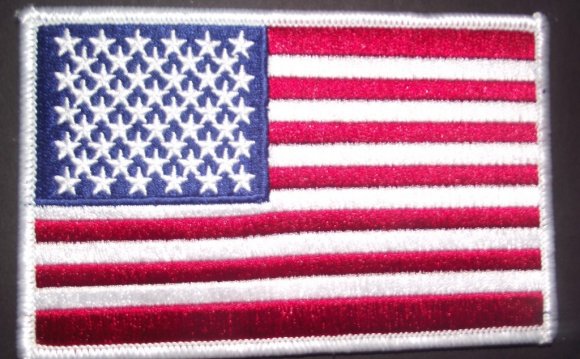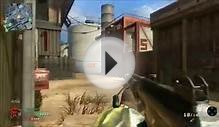
The first space patch was flown by Soviet cosmonaut Valentina Tereshkova on the Vostok-6 mission in 1963; however, that was hidden from public view by the bright orange coverall that was part of the space suit at the time. At the start of the manned ‘space age’, as a rule, astronauts were pilots from a military background. These pilots took the tradition of military shoulder patches with them; most US space missions have had dedicated designs, and since the mid-1980s most Soviet/Russian flights also featured space patches. Mission patches were first sported by NASA astronauts in 1965. The idea was first introduced to NASA by Air Force pilot (and astronaut) Gordon Cooper.
Evolution[edit]
Following the loss of the Apollo 1 crew in a devastating fire, embroidered patches were restricted from crew clothing. Instead, astronauts in flight wore mission patches of fire-resistant Beta cloth onto which designs were silkscreened. (Embroidered patches were still produced for ground side wear, non-flight personnel, sale to collectors and to be flown in space as souvenirs.)
In the Soviet Union/Russia[edit]
The Vostok-6 patch was the only one of that program. The first spacewalker, Alexei Leonov wore a general patch that he designed himself on his EVA, which was also used on subsequent flights. As part of the Interkosmos program, the manned flights to the Salyut and Mir space stations between 1978 and 1988 featured mission logos. After that, some international flights had a patch, but only from 1994 onward did every Russian manned launch feature a space patch. At that time, the design and production of the patches was done on the initiative of the crew; the designs were not sanctioned by the Russian space agency (Glavkosmos/RKA/Roscosmos). On a few confusing occasions, that lead to two ‘crew-approved’ patches existing for a single mission. The first agency-approved Russian space patch was the one for Soyuz TMA-13. However, Roscosmos was very late in announcing the design, by which time the crew had already produced their own version; the official design was not worn on the crew’s suits. Since Soyuz TMA-14 in 2009, all launches feature ‘official’ patches.
In the United States[edit]
Early manned NASA missions lacked patches; instead, the astronauts gave their spacecraft names. (Alan Shepard's capsule for Mercury 3 was named Freedom 7, for instance.) When Gus Grissom proposed to name his Gemini 3 capsule Molly Brown—a reference to, referring in turn to Grissom's Mercury 4 capsule which sank in the ocean shortly after splashdown – NASA officials were nonplussed and they abolished the practice of naming capsules.
This prompted astronaut Gordon Cooper to propose and develop a mission patch for his and Pete Conrad's Gemini 5 flight: an embroidered cloth patch sporting the names of the two crew members, a covered wagon, and the slogan "8 Days or Bust" which referred to the expected mission duration. NASA administrator James E. Webb approved the design, but insisted on the removal of the slogan from the official version of the patch. The so-called Cooper patch was worn on the right breast of the astronauts' uniforms below their nameplates and opposite the NASA emblems worn on the left.
Since Gemini 5, patches have been created for all NASA manned missions and many unmanned expeditions. Patches are now created by professional graphic designers, but the design is still directed by each astronaut crew. Enthusiasts since created patches for manned NASA missions which preceded Gemini 5; many purists object to these designs on the grounds that these souvenir patches weren't created or worn by the astronauts. Since Gemini 5, every NASA manned space mission had its own patch; 8 designs for Gemini, 12 for Apollo, 3 for Skylab, 1 for the Apollo-Soyuz Test Project (ASTP) and 135 for the Space Shuttle program.
In Europe[edit]
Although European manned spaceflight, performed by ESA, is dependent on US or Russian launches, all European astronauts have worn a patch designed for their particular flight. Members of the public regularly do European patch designs through competitions organized by ESA.
China[edit]
In 2003, China launched its first astronaut, Yang Liwei aboard Shenzhou 5. Following the US and Soviet/Russian tradition, he had a mission patch on his pressure suit. The manned Shenzhou-6, -7 and -9 missions continued the tradition. In a departure from US and Russian designs, the Chinese mission patches do not feature crew names.
Categories[edit]
- Mission patch or crew patch; designed for a single manned space mission.
- Payload patch; designed for a particular payload carried on board a Space Shuttle mission.
- ISS expedition patch; designed for the expedition of a crew on board the International Space Station; these crews wear a separate patch for the Shuttle or Soyuz mission that takes them to the station.
- Project patch; designed for a program of experiments on board a space station, like ESA designs for missions on Mir and ISS; also for a program of spaceflights, like the Space Shuttle program logo.
- Agency patch; depicting the logo of a space agency, like the NASA ‘meatball’ and the ESA ‘thumbprint’.
- Personal patch; designed for an individual astronaut or cosmonaut, for use on one or more space missions. Usually, the patch is not publicized.
- Astronaut/cosmonaut group patch; features the logo of a selection of one particular ‘class’ of astronauts/cosmonauts, usually including the year of selection.
- Unmanned and commemorative patches; lots of patches feature rockets, satellites, spaceships, the moon, planets or stars, but some collectors do not consider these ‘true’ space patches.
Artists[edit]
On the US side, artist like Jean Bealieu, William Bradley, James Cooper, Victor Craft, Jerry Elmore, Frank Kelly Freas, Barbara Matelski, Robert T. McCall, Jean Pinataro, Emilio Pucci, Gene Rickman, Allen Stevens, Norman Tiller, Walter A. Weber, and Lumen M. Winter took care of patch designs. But also aerospace company artists, astronauts and their family members and NASA graphic department designers came up with patch designs. Most early Soviet/Russian patches were designed by artists that remain anonymous. In the 90s, Dmitri Shcherbinin and Alex Panchenko provided designs for Soyuz missions and personal patches. Russian designs for Soyuz TMA-14 through TMA-03M included art done by children, submitted to Roscosmos as part of a competition. More recently Tim Gagnon of the US and Jorge Cartes of Spain designed Shuttle and ISS expedition patches, while Luc van den Abeelen and Erik van der Hoorn, both of the Netherlands, provided art for Russian Soyuz missions to ISS.
RELATED VIDEO












